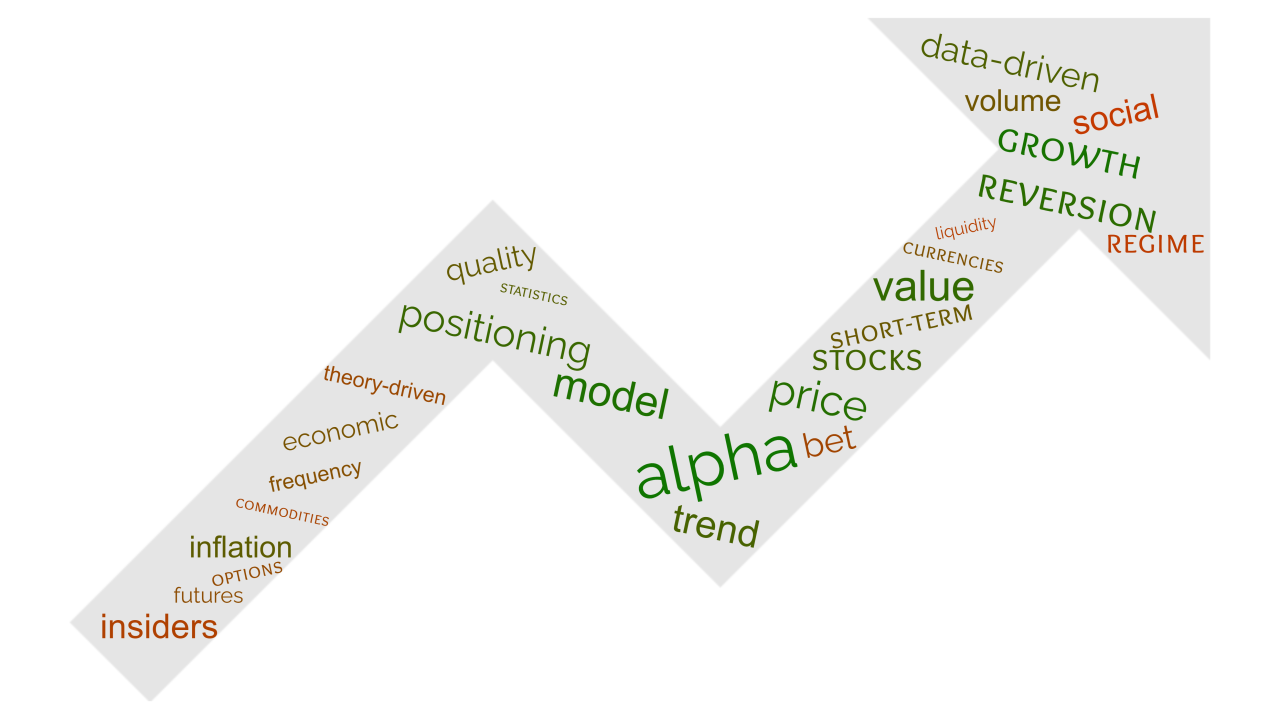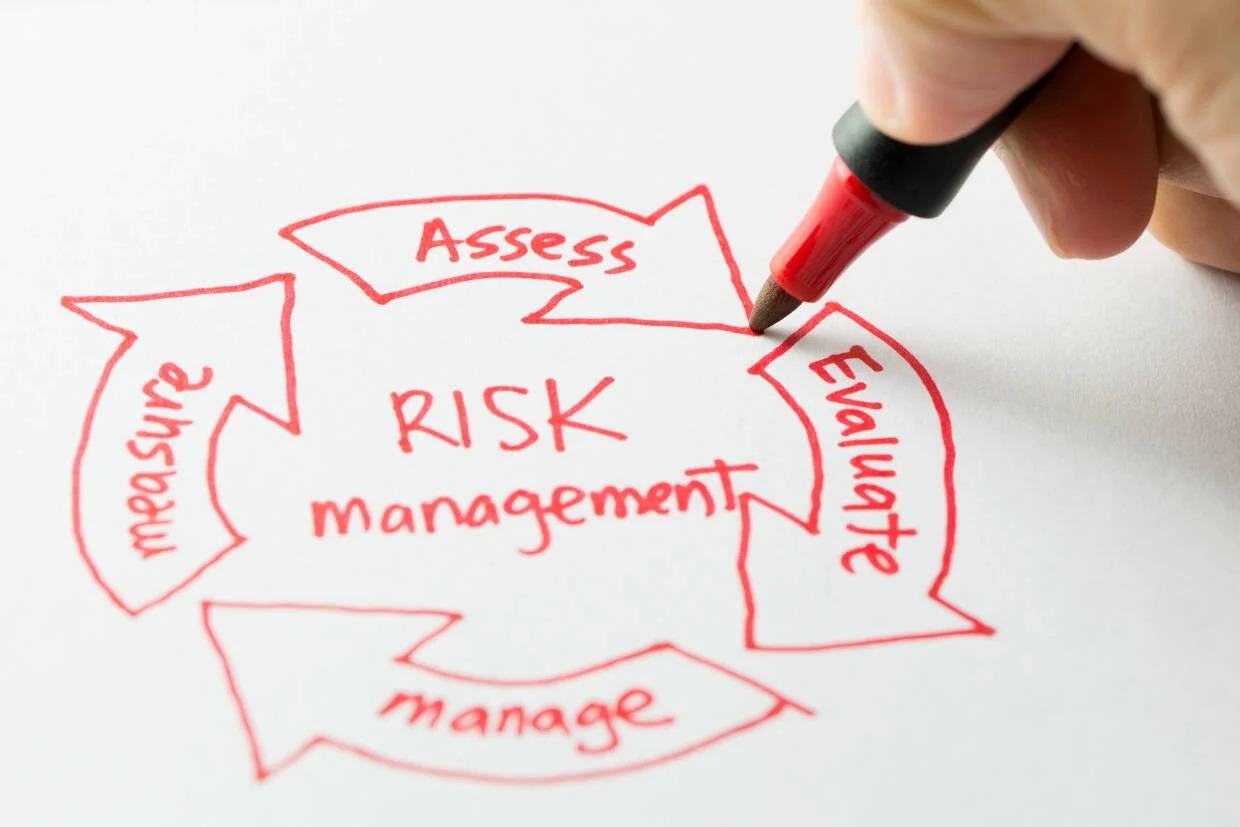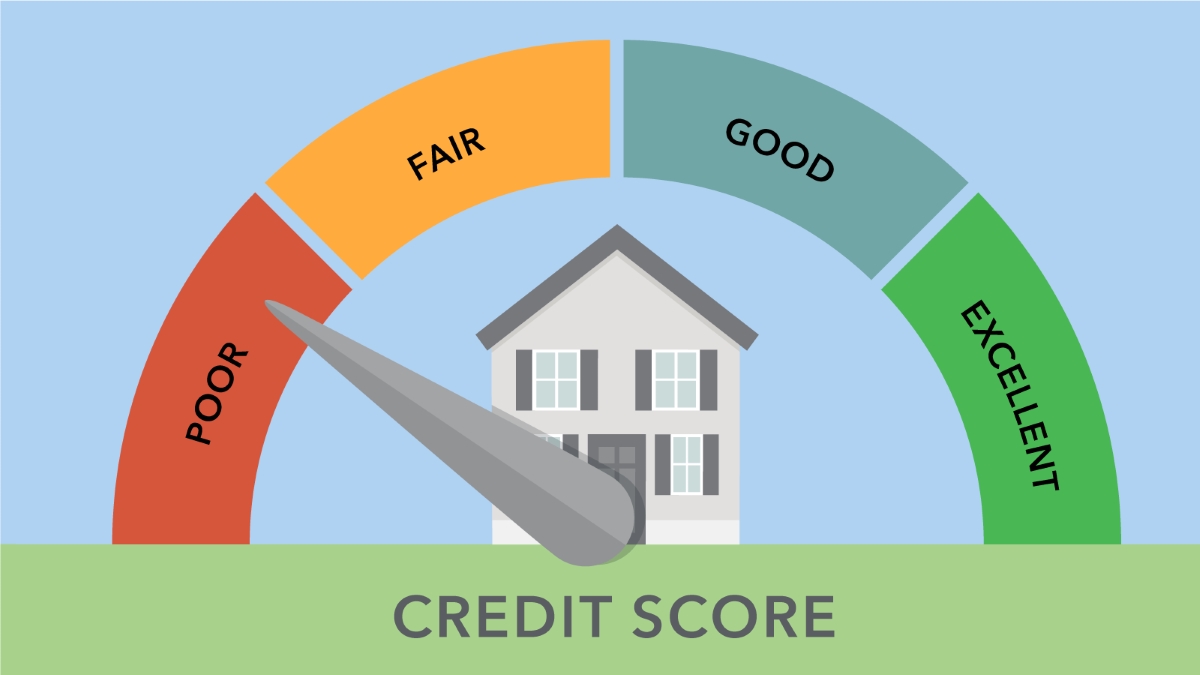

Finance
How To Measure Financial Risk
Modified: February 21, 2024
Learn how to measure financial risk in the field of finance and make informed decisions for your business. Gain insights and tools to manage risk effectively.
(Many of the links in this article redirect to a specific reviewed product. Your purchase of these products through affiliate links helps to generate commission for LiveWell, at no extra cost. Learn more)
Table of Contents
Introduction
In the world of finance, risk plays a significant role in decision-making and planning. Whether you are an investor, a business owner, or a financial professional, understanding and measuring financial risk is crucial for success. Financial risk refers to the potential for losses or negative outcomes that can arise from financial activities.
Measuring financial risk allows individuals and organizations to assess the likelihood and potential impact of adverse events in their financial endeavors. By quantifying risk, stakeholders can make informed decisions, allocate resources effectively, and implement appropriate risk management strategies.
Financial risk can arise from numerous factors, such as market volatility, economic downturns, political instability, interest rate fluctuations, and currency exchange rate movements. It is important to note that risk and return go hand in hand – the higher the potential return, the higher the risk involved. Therefore, measuring financial risk is crucial for finding the right balance between profitability and security.
In this article, we will explore the importance of measuring financial risk, different methods used for measurement, and the limitations associated with these approaches. Understanding how to measure financial risk will empower individuals and businesses to make sound financial decisions and navigate the complex landscape of the financial world.
Definition of Financial Risk
Financial risk refers to the potential for losses or adverse outcomes that can occur in various financial activities. It encompasses the uncertainty and variability in financial returns, which can lead to unexpected financial losses or failure to achieve financial goals. In simple terms, financial risk is the possibility of losing money or not achieving the desired financial outcomes.
Financial risk can arise from several sources, including market risk, credit risk, liquidity risk, operational risk, and regulatory risk:
- Market Risk: This type of risk is associated with fluctuations in financial markets. It includes risks related to changes in interest rates, foreign exchange rates, stock prices, commodity prices, and market sentiment.
- Credit Risk: Credit risk refers to the potential for losses due to the failure of borrowers or counterparties to fulfill their financial obligations. It includes risks associated with default, bankruptcy, or non-payment.
- Liquidity Risk: Liquidity risk arises when there is a difficulty in buying or selling assets quickly at a fair price. It includes risks associated with the ability to meet short-term obligations and the cost of liquidating assets.
- Operational Risk: Operational risk refers to the potential for losses due to inadequate or failed internal processes, systems, or human errors within an organization. It includes risks related to fraud, legal disputes, technological failures, and natural disasters.
- Regulatory Risk: Regulatory risk arises from changes or non-compliance with laws, regulations, or government policies. It includes risks related to fines, penalties, sanctions, and reputational damage.
Measuring financial risk involves assessing the probability and potential severity of adverse financial outcomes associated with these risks. By quantifying risk, individuals and organizations can better understand their exposure and take appropriate actions to mitigate or manage it.
It is important to note that risk and return are inherently linked in finance. Higher-risk investments often carry the potential for higher returns, while lower-risk investments generally provide lower returns. The key is finding the right balance between risk and reward that aligns with an individual’s or organization’s risk tolerance and financial objectives.
Importance of Measuring Financial Risk
Measuring financial risk is crucial for individuals and organizations in making informed financial decisions and managing their resources effectively. Here are some key reasons why measuring financial risk is important:
- Decision-Making: Measuring financial risk provides valuable insights that can help individuals and organizations make well-informed decisions. By understanding the level of risk associated with different financial options, stakeholders can weigh the potential rewards against the potential losses and choose strategies that align with their risk appetite and financial goals.
- Resource Allocation: Measuring financial risk allows for efficient allocation of financial resources. By assessing the risk associated with various investments or projects, individuals and organizations can prioritize their investments and allocate resources accordingly. The identification of high-risk areas can also lead to risk mitigation efforts or diversification strategies to minimize potential losses.
- Risk Management: Measuring financial risk is the first step in effective risk management. By quantifying risk, individuals and organizations can identify potential vulnerabilities and implement appropriate risk mitigation strategies. This may involve diversifying investment portfolios, hedging against market fluctuations, implementing internal controls, or securing insurance coverage to protect against specific risks.
- Compliance and Regulation: Measuring financial risk helps ensure compliance with regulatory requirements. Different regulations and reporting standards necessitate the measurement and disclosure of financial risks. By accurately measuring and reporting financial risk, organizations can demonstrate transparency and fulfill their compliance obligations.
- Stakeholder Confidence: Measuring financial risk enhances stakeholder confidence. Whether it is investors, lenders, or shareholders, stakeholders want to understand the risk associated with their financial involvement. By providing transparent and accurate risk assessments, individuals and organizations can build trust and credibility with their stakeholders, leading to stronger relationships and increased support.
In summary, measuring financial risk is of paramount importance for individuals and organizations. It enables informed decision-making, efficient resource allocation, effective risk management, regulatory compliance, and the establishment of stakeholder confidence. By understanding and quantifying financial risk, stakeholders can navigate the complex landscape of the financial world with greater confidence and achieve their desired financial outcomes.
Different Methods of Measuring Financial Risk
Measuring financial risk requires the use of various quantitative and qualitative methods. These methods help individuals and organizations assess the likelihood and potential impact of adverse financial outcomes. Here are some commonly used methods for measuring financial risk:
- Ratio Analysis: Ratio analysis involves evaluating various financial ratios to gauge the financial health and risk profile of an individual or organization. Commonly used ratios include the debt-to-equity ratio, current ratio, and profitability ratios. These ratios provide insights into the financial leverage, liquidity, and profitability of an entity, allowing for the assessment of potential risks.
- Historical Volatility: Historical volatility measures the degree of price fluctuations of a financial instrument over a specified period. It helps quantify the inherent risk associated with an investment. By analyzing past price movements, individuals and organizations can estimate the potential range of future price fluctuations and assess the risk profile of an investment.
- Beta Coefficient: Beta coefficient is a measure of systematic risk or the sensitivity of an investment’s returns to market movements. It measures how closely an investment’s returns move in relation to the overall market. A beta coefficient greater than 1 indicates higher volatility compared to the market, while a beta coefficient less than 1 suggests lower volatility. By calculating the beta coefficient, investors can assess the risk associated with a particular investment.
- Value at Risk (VaR): VaR is a statistical method used to estimate the potential losses in the value of a portfolio or investment over a given time period and at a specified confidence level. It provides a numerical measure of the maximum potential loss that could occur under normal market conditions. VaR helps individuals and organizations understand the downside risk associated with their investments and set appropriate risk thresholds.
- Stress Testing: Stress testing involves subjecting a portfolio or financial system to simulated adverse events or extreme market conditions to assess its resilience and potential losses. It helps identify vulnerabilities and potential risk exposures that may not be captured by traditional risk assessment methods. By conducting stress tests, individuals and organizations can better understand the impact of severe market disruptions and evaluate their risk management strategies accordingly.
It is important to note that no single method can capture all aspects of financial risk. Combining multiple methods and using qualitative judgment is often necessary to obtain a comprehensive understanding of financial risk. Additionally, the choice of measurement method may depend on the nature of the investment, the level of complexity involved, and the specific goals and preferences of the individuals or organizations.
By utilizing these various methods, individuals and organizations can gain insights into the potential risks associated with their financial activities and make informed decisions in managing and mitigating those risks.
Ratio Analysis
Ratio analysis is a commonly used method for measuring financial risk. It involves evaluating various financial ratios to assess the risk profile and financial health of an individual or organization. By analyzing these ratios, stakeholders can gain insights into the risk exposure, financial leverage, liquidity, profitability, and efficiency of an entity.
Here are some key ratios used in ratio analysis:
- Debt-to-Equity Ratio: The debt-to-equity ratio measures the proportion of debt financing compared to equity financing in a company’s capital structure. It indicates the level of financial leverage and the degree of risk associated with the company’s capital. A higher debt-to-equity ratio suggests higher financial risk, as the company has a larger proportion of debt obligations to fulfill.
- Current Ratio: The current ratio measures a company’s ability to meet its short-term obligations using its short-term assets. It is calculated by dividing current assets by current liabilities. A higher current ratio indicates a better ability to meet short-term obligations, while a lower current ratio may indicate potential liquidity issues and higher financial risk.
- Profitability Ratios: Profitability ratios assess a company’s ability to generate profits from its operations. Common profitability ratios include gross profit margin, operating profit margin, and net profit margin. These ratios help stakeholders understand the efficiency of a company’s cost management, pricing strategies, and overall profitability, which can be an indication of financial performance and risk.
- Liquidity Ratios: Liquidity ratios measure a company’s ability to meet its short-term obligations without incurring significant losses. The most widely used liquidity ratios are the current ratio and the quick ratio (which excludes inventory). These ratios help assess the company’s ability to generate cash, manage working capital, and handle unexpected financial obligations or downturns, reducing the risk of insolvency or financial distress.
- Efficiency Ratios: Efficiency ratios measure how effectively a company utilizes its assets, resources, and capital to generate revenue. Common efficiency ratios include inventory turnover ratio, accounts receivable turnover ratio, and total asset turnover ratio. These ratios help stakeholders assess the effectiveness of an organization’s operations, identify areas of improvement, and minimize operational risks.
Ratio analysis allows individuals and organizations to compare financial performance and risk profiles across different periods, industries, or competitors. By assessing these ratios and comparing them to industry benchmarks or historical trends, stakeholders can identify potential red flags, areas of concern, or opportunities for improvement.
However, it is important to consider the limitations of ratio analysis. Ratios only provide a snapshot of a company’s financial condition at a particular point in time and may not capture the full complexities or nuances of a company’s operations. Therefore, it is essential to complement ratio analysis with other methods and qualitative judgment to obtain a comprehensive understanding of financial risk.
Overall, ratio analysis is a valuable tool for measuring financial risk as it helps stakeholders evaluate a company’s risk exposure, financial health, and efficiency. By leveraging these ratios, individuals and organizations can make well-informed decisions, identify areas for improvement, and manage their financial risk effectively.
Historical Volatility
Historical volatility is a method used to measure financial risk by analyzing the degree of price fluctuations of a financial instrument over a specified period. It helps assess the inherent risk associated with an investment or a market by quantifying the level of variability in its historical returns.
To calculate historical volatility, the prices of the financial instrument are observed over a defined period, typically using daily or monthly data. The returns for each period are calculated, and the standard deviation of these returns is then used to determine the historical volatility.
Historical volatility is crucial for understanding the potential range of future price movements and estimating the risk associated with an investment. A higher historical volatility indicates greater price fluctuations, suggesting a higher level of risk. Conversely, a lower historical volatility suggests more stable and less risky price movements.
Investors and traders can use historical volatility as a tool to assess investment risks and make informed decisions. For example, if historical volatility is high, it may indicate greater uncertainty and unpredictability in the investment’s future returns, which may necessitate a higher risk premium.
Historical volatility is particularly useful in two key areas:
- Portfolio Risk Management: Historical volatility helps investors assess the risk profile of their portfolios. By calculating the historical volatility of each investment and the overall portfolio, investors can understand the potential risk exposure and diversify their holdings accordingly. It allows for a better understanding of how different investments may behave under different market conditions, facilitating risk mitigation strategies.
- Option Pricing: Historical volatility is a crucial input in option pricing models, such as the Black-Scholes model. It helps determine the implied volatility, which is an essential component in estimating the fair value of an option. Investors use historical volatility to assess the relative attractiveness of options, considering whether the implied volatility is higher or lower than historical levels.
It is important to note that historical volatility has limitations. It is based on past data and may not accurately predict future volatility. Market conditions and factors influencing price movements can change, making it crucial to consider other risk assessment methods alongside historical volatility.
Despite its limitations, historical volatility provides valuable insights into the risk profile of financial instruments and helps investors gauge the potential range of price movements. By incorporating historical volatility into their analysis, investors can make better-informed decisions, manage their risk exposure, and potentially enhance their returns.
Beta Coefficient
The beta coefficient is a widely used method for measuring financial risk that quantifies the sensitivity of an investment’s returns to market movements. It helps investors assess the systematic risk associated with a particular investment or portfolio by measuring how closely its returns move in relation to the overall market.
When calculating the beta coefficient, a value greater than 1 indicates higher volatility compared to the market, while a value less than 1 suggests lower volatility. A beta of 1 indicates that the investment tends to move in line with the market, reflecting average market risk. A beta coefficient of 0 implies no correlation to market movements, indicating the absence of systematic risk.
The beta coefficient allows investors to understand how an investment may perform relative to the overall market in terms of risk. If an investment has a beta greater than 1, it is considered more volatile than the market, indicating a higher level of risk. Conversely, investments with a beta less than 1 tend to be less volatile than the market, suggesting lower risk.
The beta coefficient is particularly useful in two key areas:
- Portfolio Diversification: Investors can utilize the concept of beta to diversify their portfolios effectively. By combining investments with different beta coefficients, they can reduce the overall risk exposure of their portfolio. Combining assets with negative or low-beta investments alongside those with positive or high beta investments provides the potential for enhanced risk-adjusted returns.
- Risk-Adjusted Return Evaluation: The beta coefficient allows investors to assess the risk-adjusted return of an investment. It helps to determine whether an investment has outperformed or underperformed the market when taking into account its level of risk. By comparing a stock’s or investment’s historical performance to its beta coefficient, investors can evaluate the effectiveness of the investment in generating excess returns.
It is important to note that the beta coefficient has limitations. It is based on historical data and may not accurately predict future performance. Additionally, beta only captures systematic risk and does not account for specific or company-specific risks.
Furthermore, beta coefficients differ across industries and sectors, making it important to compare investments within the same sector for a more meaningful analysis. It is also crucial to consider other factors and conduct a comprehensive analysis in conjunction with beta to fully assess an investment’s risk profile.
Despite its limitations, the beta coefficient remains a valuable tool for investors to measure the risk associated with an investment and make informed decisions. By incorporating beta into their analysis, investors can evaluate the volatility and potential risk exposure of investments and optimize their portfolio construction and risk management strategies.
Value at Risk (VaR)
Value at Risk (VaR) is a statistical measure used to estimate the potential losses in the value of a portfolio or investment over a given time period and at a specified confidence level. It provides a numerical measure of the maximum potential loss that could occur under normal market conditions within a defined time horizon.
VaR helps investors and risk managers understand and quantify the downside risk associated with their investments. By estimating the maximum potential loss, VaR provides a risk threshold that allows stakeholders to set appropriate risk tolerance levels and implement risk management strategies accordingly.
VaR is calculated based on historical data or simulation techniques. There are three key components of VaR calculation:
- Time Horizon: The time horizon represents the length of the investment horizon or the period over which the VaR is being calculated. It could be a day, a week, a month, or any other specified time frame.
- Confidence Level: The confidence level determines the level of certainty or probability at which the VaR is estimated. For example, a 95% confidence level implies that there is a 5% chance of the actual losses exceeding the estimated VaR value.
- Return Distribution: The return distribution is used to model the potential price movements or returns of the underlying assets. It can be based on historical data, assuming that future returns will follow a similar pattern, or it can be derived using various simulation techniques, such as Monte Carlo simulation.
VaR helps stakeholders understand the potential downside risk of their investments and set risk thresholds. It enables them to make informed decisions regarding portfolio diversification, risk mitigation, and capital allocation. By comparing the VaR of different investments, stakeholders can assess the level of risk associated with each investment and select portfolios that align with their risk tolerance and financial objectives.
However, it is important to note that VaR has certain limitations. It assumes that historical return patterns or simulated scenarios will continue to hold in the future, which may not always be the case. VaR cannot capture extreme events or tail risk, as it is based on standard statistical distributions. Additionally, VaR does not provide any information about the magnitude of potential losses beyond the estimated VaR value.
Despite its limitations, VaR remains a widely used and valuable tool in risk management. It provides a quantitative measure of potential losses, allowing stakeholders to assess and manage the downside risk associated with their investments.
Stress Testing
Stress testing is a method used to measure financial risk by subjecting a portfolio or financial system to simulated adverse events or extreme market conditions. It helps individuals and organizations assess the resilience of their investments, identify vulnerabilities, and estimate potential losses under severe scenarios.
In stress testing, various hypothetical scenarios are created, such as market crashes, economic downturns, interest rate spikes, or geopolitical crises. These scenarios go beyond normal market conditions and aim to test the robustness of an investment or portfolio in times of extreme stress.
The process of stress testing typically involves the following steps:
- Scenario Selection: Scenarios are carefully designed to capture potential risks and vulnerabilities specific to the investment or financial system being tested. The scenarios reflect adverse conditions that may include sharp market movements, changes in economic indicators, or unexpected events.
- Data Collection and Analysis: Historical market data, economic indicators, and other relevant information are collected and analyzed to determine how the investment or portfolio would have performed under the stress scenarios. This analysis helps assess the potential impact on key risk factors and potential losses.
- Financial Impact Assessment: The financial impact of the stress scenarios is evaluated, including potential losses, capital erosion, liquidity requirements, and changes in risk exposures. This assessment helps identify areas where risk mitigation or contingency measures may be necessary.
- Risk Mitigation and Strategy Development: Based on the insights gained from stress testing, risk mitigation strategies and contingency plans can be developed. This may involve adjusting risk exposures, diversifying portfolios, implementing hedging strategies, establishing liquidity buffers, or revising investment strategies.
Stress testing is an essential tool for risk managers, regulators, and investors as it provides insights into the potential impact of severe market disruptions and prepares for worst-case scenarios. By subjecting investments to stress tests, individuals and organizations can better understand their risk exposures, manage their portfolios more effectively, and make informed decisions.
It is important to note that stress testing has its limitations. It relies on hypothetical scenarios and may not capture all possible risks and outcomes. Additionally, stress testing cannot predict the exact timing and nature of future stressed events. Therefore, stress testing should not be the sole basis for decision-making, but rather one of several risk assessment and management tools utilized.
Despite its limitations, stress testing plays a crucial role in assessing financial risk. It helps stakeholders understand the potential vulnerabilities of their investments, enhances risk management practices, and improves overall resilience in the face of adverse market conditions.
Example of Financial Risk Measurement
To illustrate how financial risk can be measured, let’s consider an example of a manufacturing company called XYZ Inc. that is looking to expand its operations into international markets. Before making any investment decisions, XYZ Inc. wants to assess the potential financial risks associated with this expansion.
Firstly, XYZ Inc. could conduct ratio analysis to evaluate its financial health and risk profile. They can calculate ratios such as the debt-to-equity ratio to assess the company’s leverage and financial stability. A higher debt-to-equity ratio would indicate higher financial risk due to increased debt obligations.
Secondly, historical volatility can be measured by analyzing the price movements of XYZ Inc.’s stock over a specific period. This analysis would provide an understanding of the level of risk associated with the stock, enabling XYZ Inc. to make informed decisions about its investment.
Furthermore, XYZ Inc. may calculate the beta coefficient of its stock to determine how closely it correlates with the overall market. If the beta is greater than 1, it implies that the stock is more volatile than the market, indicating higher financial risk.
Additionally, XYZ Inc. could utilize Value at Risk (VaR) to estimate potential losses in their investment portfolio. By calculating VaR at a desired confidence level, XYZ Inc. can quantify the maximum potential loss they are willing to accept, helping them assess the risk associated with their investment decisions.
Last but not least, stress testing can be performed to evaluate the impact of adverse scenarios on XYZ Inc.’s expansion plans. For example, XYZ Inc. can assess the potential financial losses if there is a significant currency depreciation or an economic downturn in the target markets they plan to enter. This stress testing would highlight the potential risks and vulnerabilities associated with the international expansion.
By employing these different methods of financial risk measurement, XYZ Inc. will obtain a comprehensive understanding of the potential risks and vulnerabilities associated with their expansion plans. This knowledge will assist them in making better-informed decisions, implementing risk mitigation strategies, and potentially maximizing their chances of success in the new markets.
Limitations of Financial Risk Measurement
While financial risk measurement methods are valuable tools, it is essential to recognize their limitations and potential pitfalls. Here are some key limitations of financial risk measurement:
- Assumption of Normal Market Conditions: Many risk measurement models assume that market conditions follow a normal distribution, which may not always hold true. In reality, financial markets can experience extreme events, such as market crashes or global crises, which are not accounted for in these models.
- Past Performance May Not Predict Future Results: Historical data used in risk measurement models may not accurately reflect future market conditions and outcomes. Market dynamics and economic factors can change, rendering historical patterns less informative and potentially leading to inaccurate risk assessments.
- Limited Scope of Traditional Risk Factors: Traditional risk measurement models often focus on measurable factors, such as market volatility, interest rates, and credit ratings. However, they may not capture all relevant risk factors, including emerging risks, technological advancements, regulatory changes, or geopolitical events, which can have a significant impact on financial risk.
- Correlation Assumptions: Many risk measurement models assume that different investments or asset classes have a certain level of correlation. However, during periods of financial stress or market dislocation, correlations can change, leading to distorted risk assessments. This assumes a stable relationship among various assets that may not hold true in turbulent markets.
- Overreliance on Quantitative Data: While quantitative models and data-driven approaches are valuable, they should not be the sole basis for risk assessment. Qualitative factors, expert judgment, and contextual analysis are also essential in understanding and managing financial risk. An overreliance on quantitative data may overlook crucial qualitative insights and holistic risk perspectives.
It is crucial to acknowledge these limitations and use financial risk measurement methods as part of a broader risk management framework. Incorporating qualitative analysis, expert judgment, stress testing, and scenario analysis can provide a more robust understanding of potential risks and enhance risk management strategies.
Additionally, it is important to regularly review and update risk measurement models to ensure that they remain relevant and aligned with the changing market conditions and risk landscape. Risk management should be an ongoing process, adapting to new challenges and incorporating lessons learned from past experiences.
By recognizing the limitations of financial risk measurement and employing a holistic and adaptive approach to risk management, individuals and organizations can better navigate the complexities of the financial world and make more informed decisions in managing their risk exposures.
Conclusion
Measuring financial risk is a critical aspect of decision-making and risk management in the world of finance. It involves assessing the likelihood and potential impact of adverse financial outcomes and quantifying risk to make informed choices. Throughout this article, we have explored several methods used for measuring financial risk, including ratio analysis, historical volatility, beta coefficient, Value at Risk (VaR), and stress testing.
Ratio analysis provides insights into the financial health and risk profile of an individual or organization, allowing for better decision-making and resource allocation. Historical volatility helps quantify the inherent risk associated with an investment, enabling investors to understand potential price fluctuations and estimate risk exposure. The beta coefficient measures an investment’s sensitivity to market movements, indicating its risk relative to the market. VaR estimates potential losses in a portfolio, providing a quantitative measure of downside risk. Stress testing evaluates the impact of adverse scenarios, identifying vulnerabilities and enhancing risk management practices.
However, it is important to acknowledge the limitations of these methods. They often assume normal market conditions, may not accurately predict future outcomes, or overlook certain risk factors. Therefore, a comprehensive approach to risk management should incorporate qualitative analysis, expert judgment, and scenario-based assessments.
By understanding and measuring financial risk, individuals and organizations can make well-informed decisions, manage their portfolios effectively, and allocate resources in a manner that aligns with their risk tolerance and financial objectives. It allows for the identification and mitigation of potential vulnerabilities, supports compliance with regulatory requirements, and enhances stakeholder confidence.
Ultimately, financial risk measurement is a continuous and dynamic process that requires ongoing monitoring, evaluation, and adaptation. By staying vigilant and responsive to changing market conditions and risk landscapes, stakeholders can navigate the complex world of finance with greater confidence and mitigate potential pitfalls along the way.














